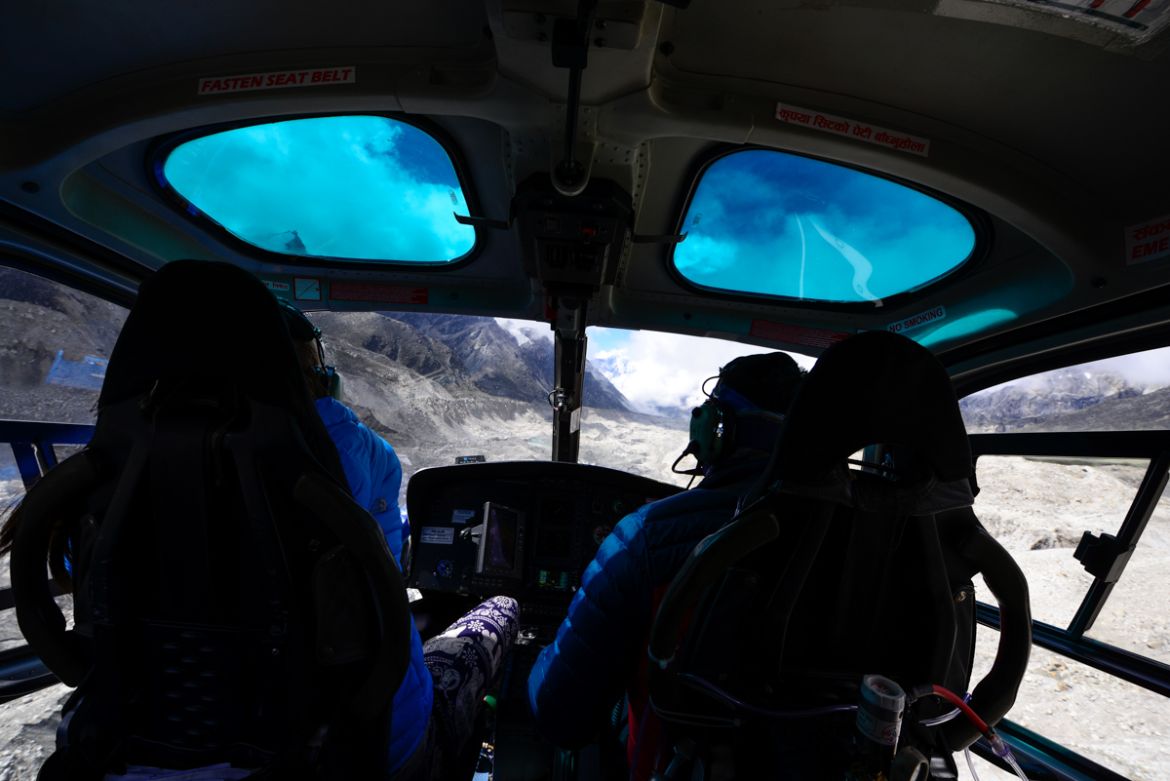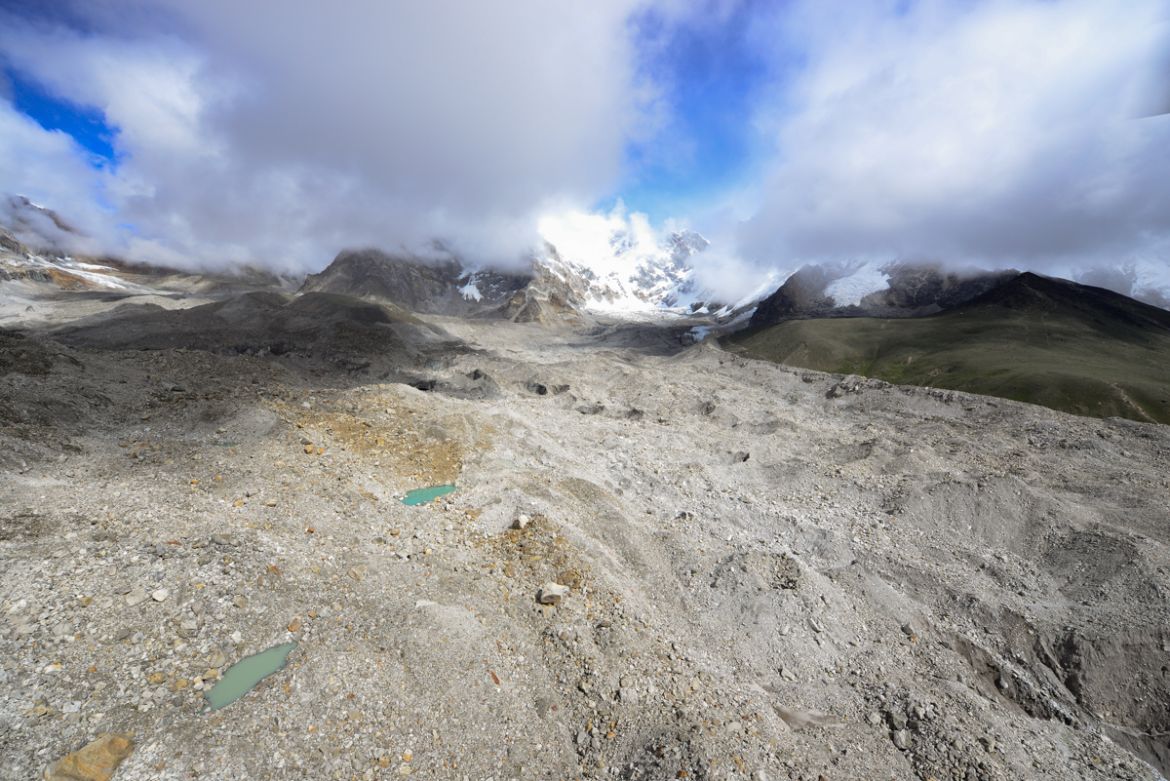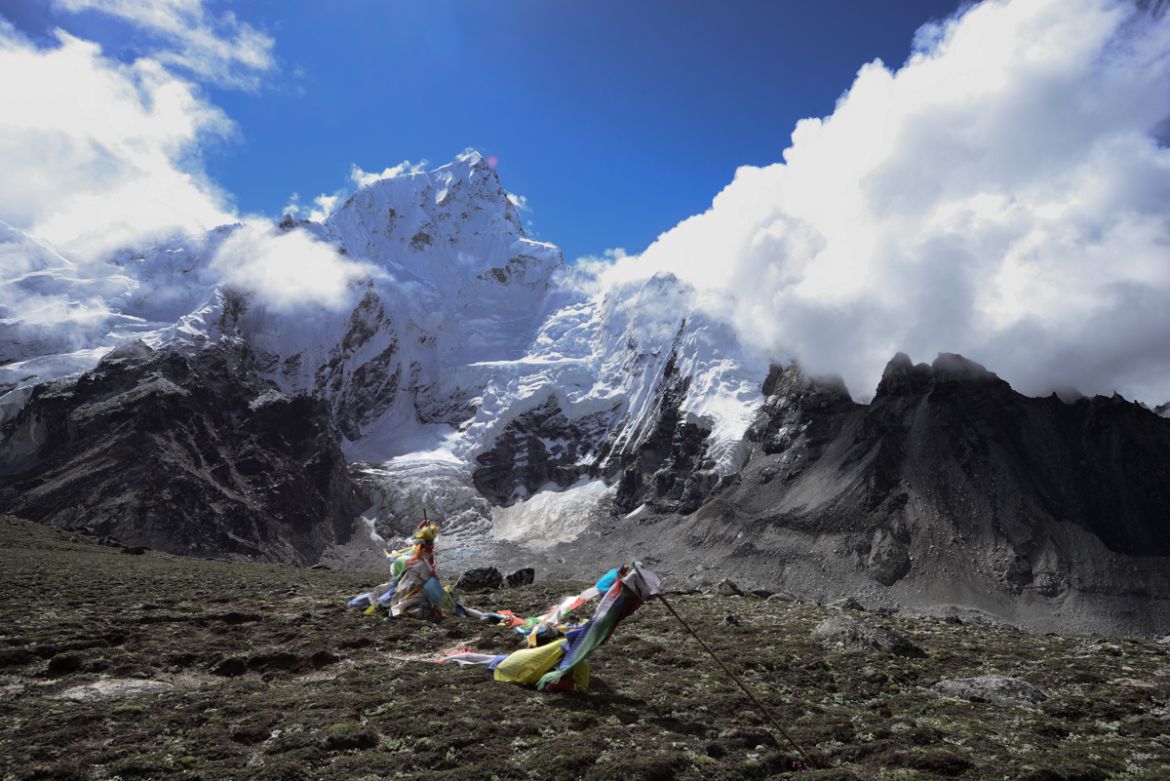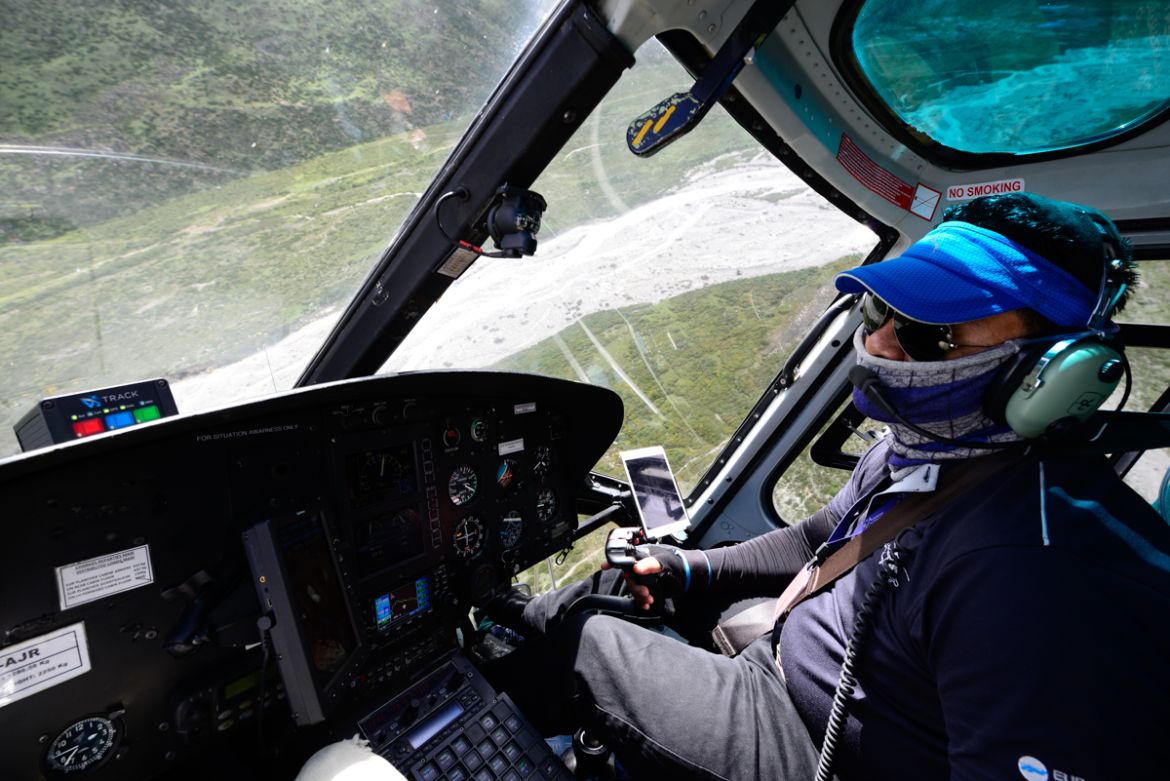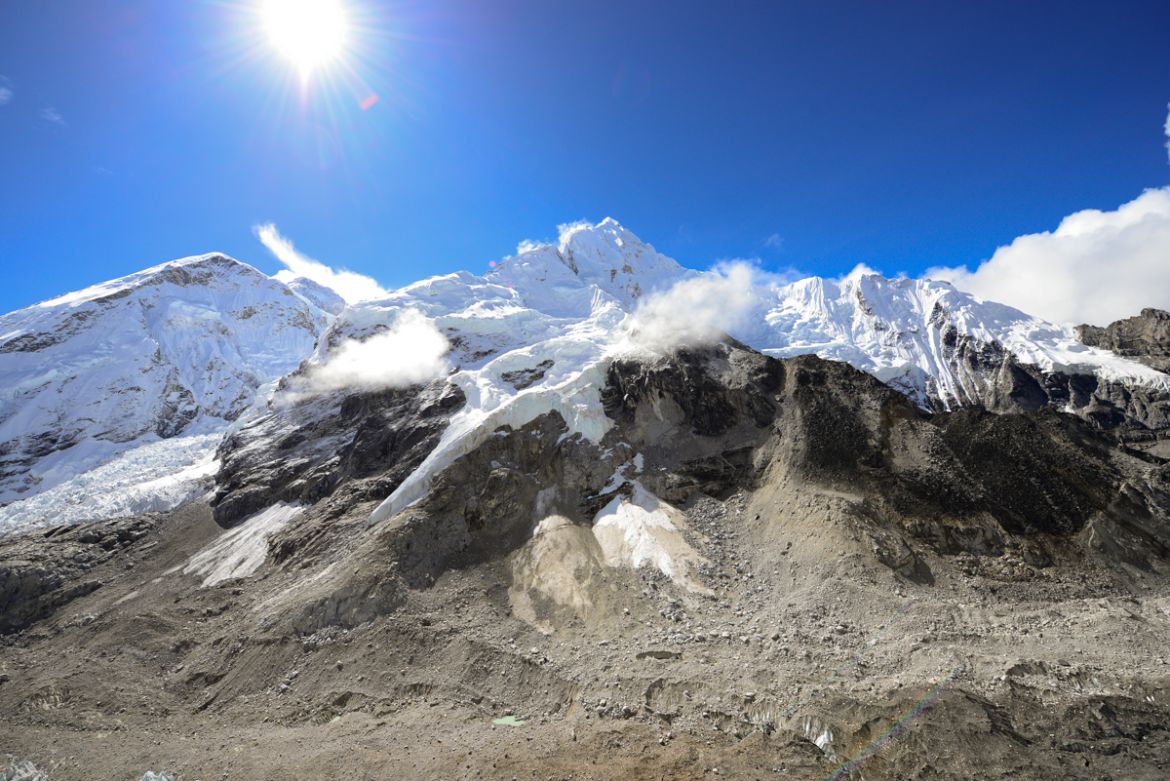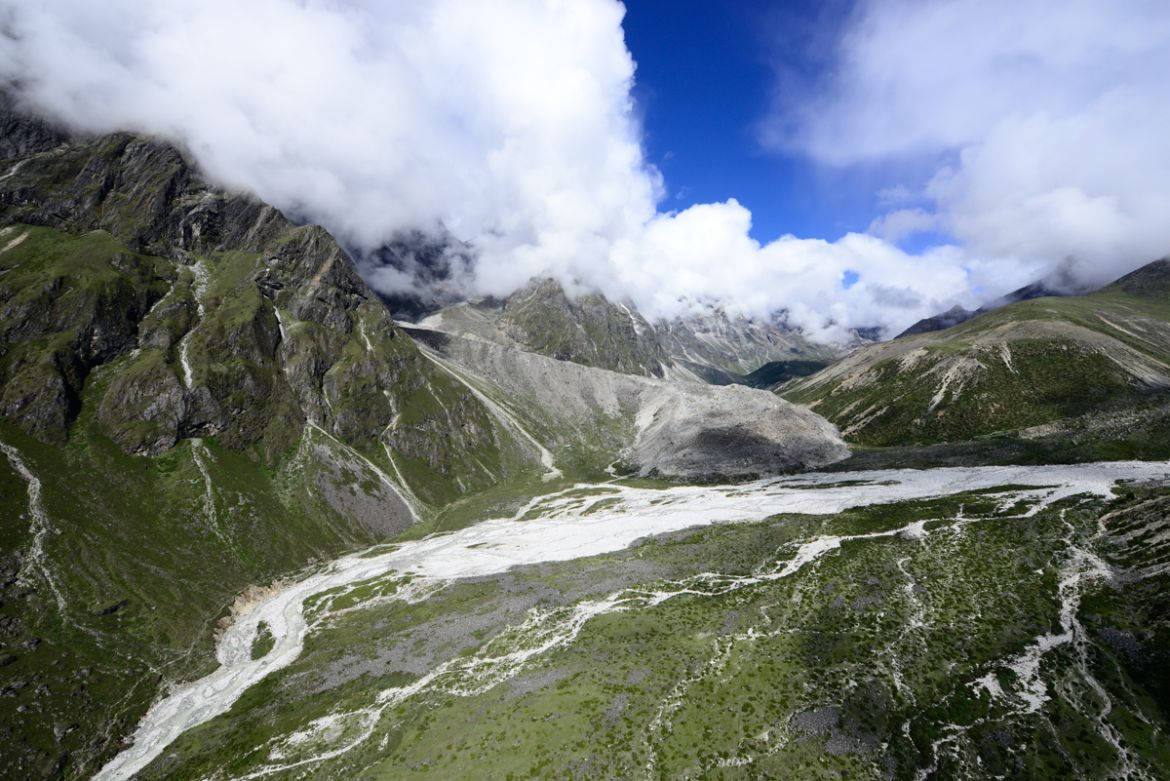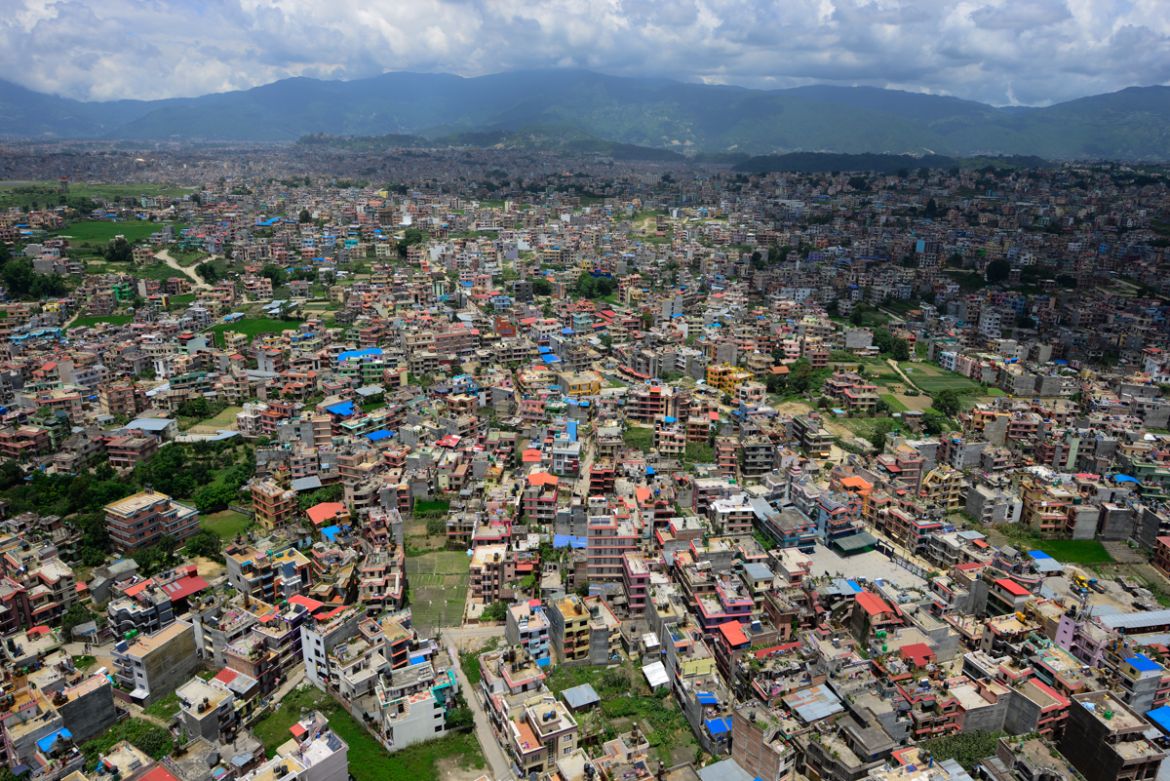In Pictures
A rescue pilot’s perspective on Everest’s melting glaciers
With a bird’s eye view of the Himalayas, pilots can see the effect climate change is having on glaciers.
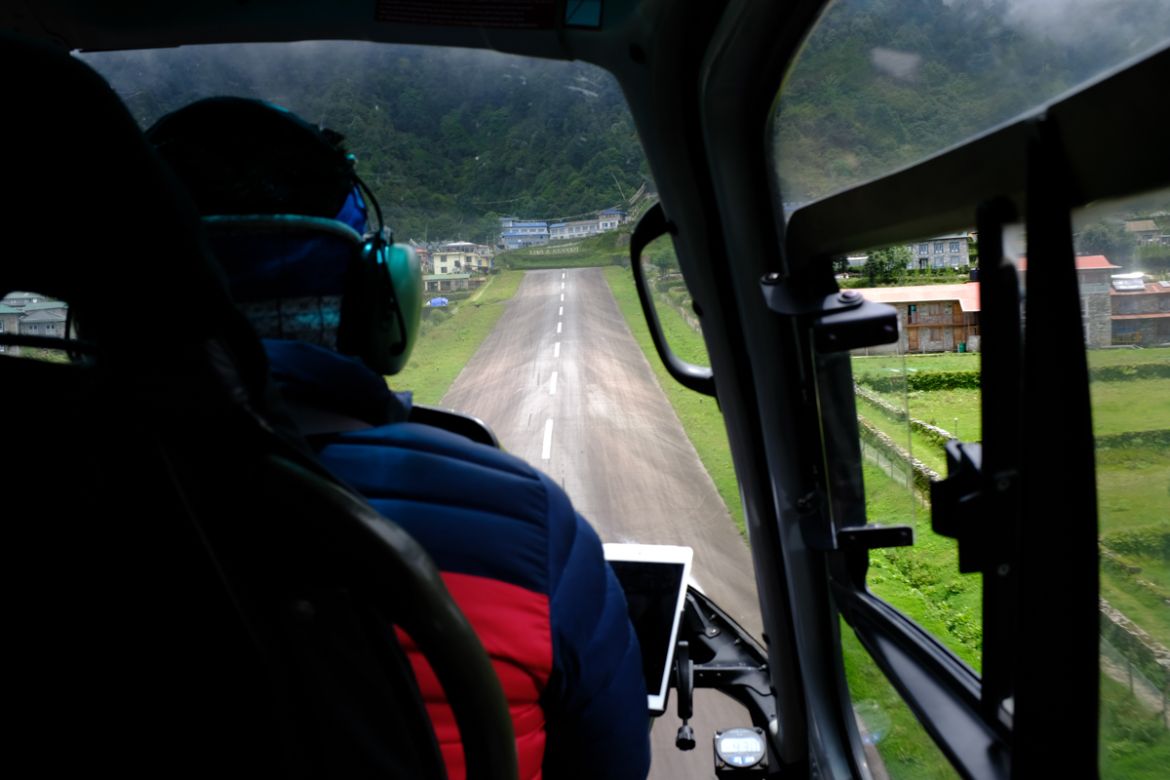
Everest Base Camp, Nepal – “Don’t go too far, and don’t get lost, please. We can’t spare the fuel,” warns Nepali rescue pilot Captain Kiran Pun, as he touches down close to the edge of the Khumbu Glacier.
At Everest Base Camp’s 5,360m altitude, helicopter pilots seldom risk shutting off their engines over a fear the lack of oxygen will prevent them restarting. There is also the chance of being rolled over by a sudden shift in the ice.
The pilots navigate one of the most dangerous flying territories in the world, ferrying vital medical supplies to remote communities, injured mountaineers to hospitals in Pheriche or Kathmandu, and relief operations after natural disasters, through weather so unpredictable, a forced emergency landing is never out of the question.
But from their bird’s eye view of the Himalayas, they have a unique perspective of the landscape, and the effect climate change is having on Mount Everest’s glaciers and the surrounding mountains.
“I’ve noticed great changes in the size of glaciers on the mountains due to global warming,” says Captain Pun. “The glaciers keep thinning and it’s becoming more common to see parts of the mountains which used to be hidden by ice.”
Scientists monitoring climate change in the region say the average melt rate has doubled in the past decade, with data revealing only 72 percent of the glacial areas mapped in 1975 remained in 2018.
Away from the glaciers, the ice loss also imposes a profound effect on the wider Himalayan landscape, and brings with it complications for the millions of people living in the shadows of the mountains.
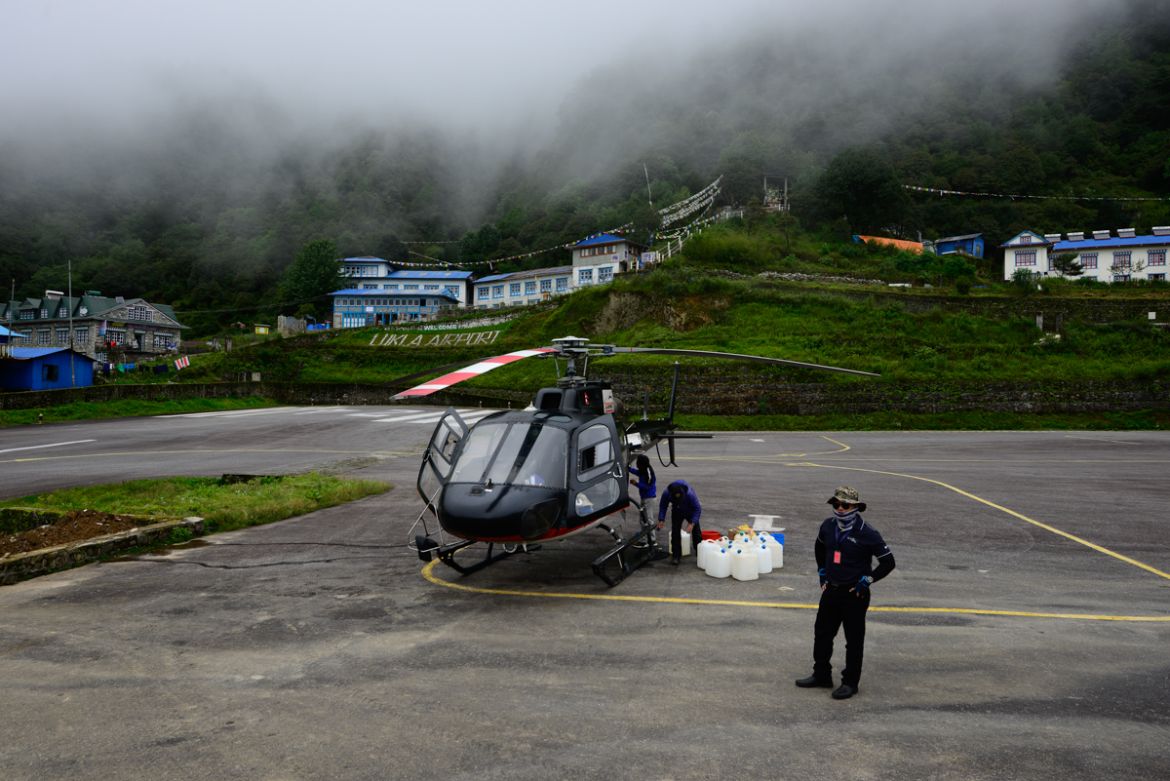
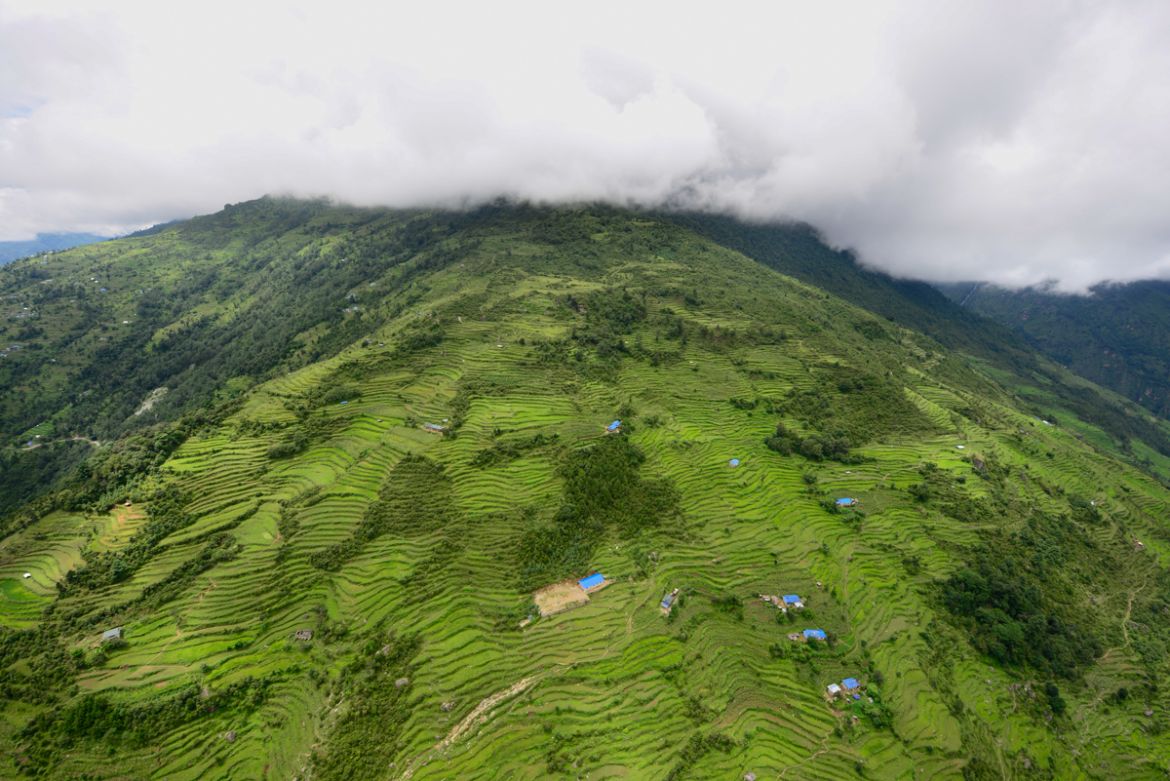
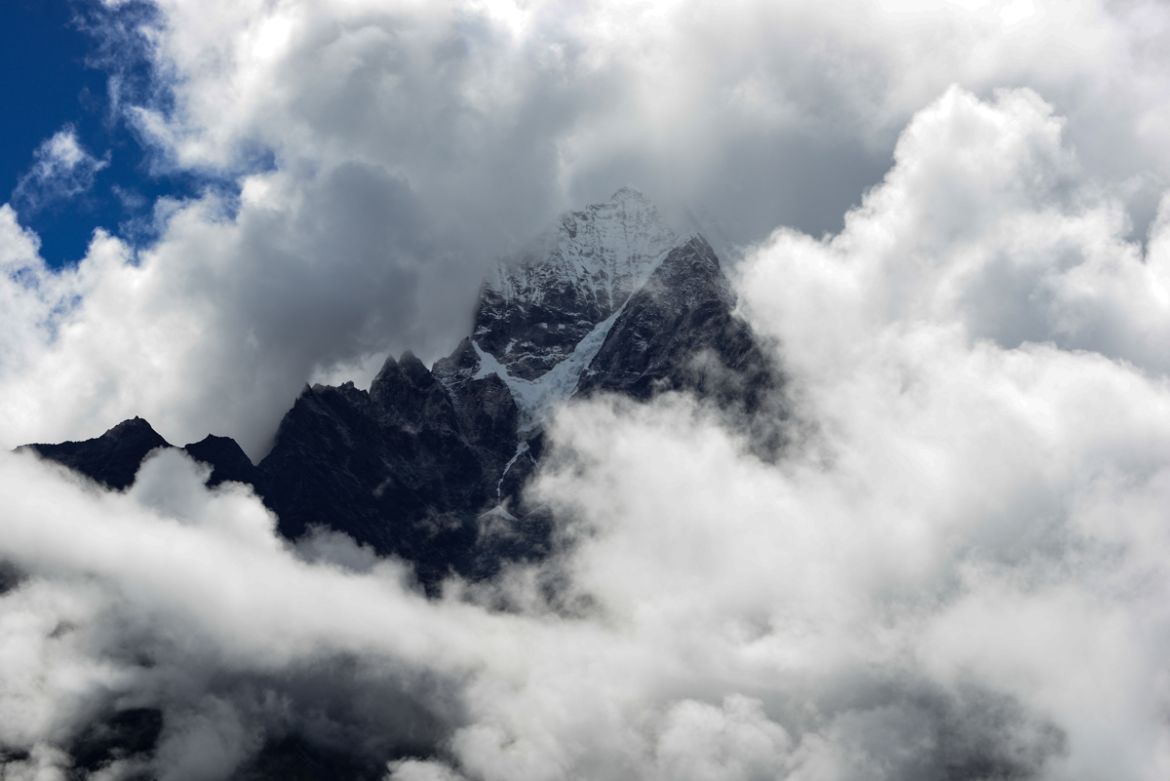
![At 4,371m above sea level Pheriche is the world''s highest hospital and AMS [Acute Mountain Sickness] research station. After the April 2015 Earthquake killed more than 20 climbers on Everest, a single](/wp-content/uploads/2019/09/9a4ff9e86f0541c393cafe8cb2075692_8.jpeg?fit=1170%2C781&quality=80)
